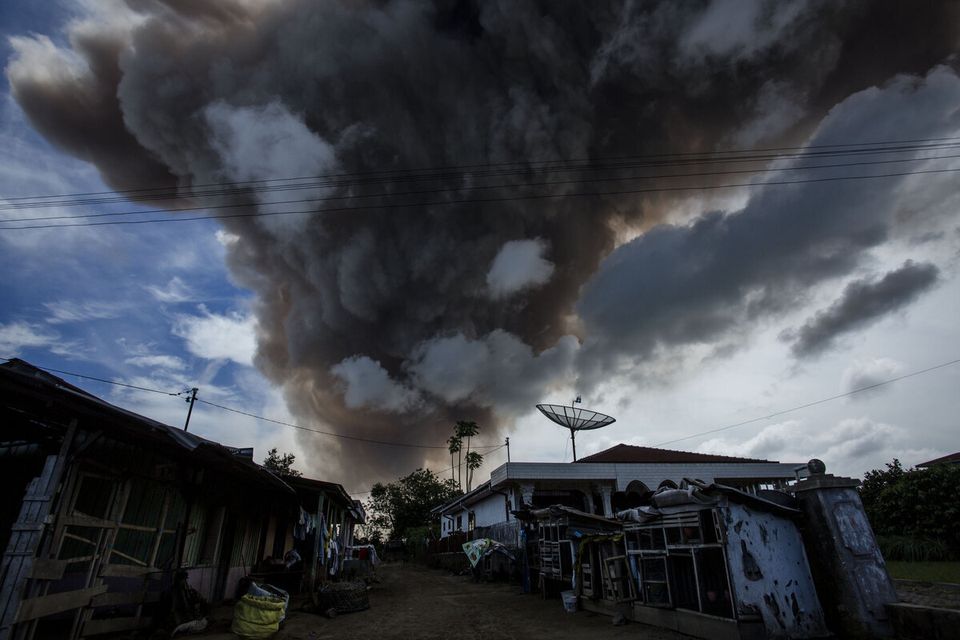Thousands of villagers are refusing to leave their homes on the slopes of one of Indonesia's most volatile volcanoes despite warnings that it is poised for a powerful eruption.
Mount Sinabung, one of about 130 active volcanoes in Indonesia, has been at the highest alert level for nearly two weeks. On Tuesday, at least 48 avalanches of hot ash barreled down its slopes, with the biggest reaching 2.5 kilometers (1.5 miles) southeastward. The volcano in northern Sumatra, one of Indonesia's main islands, has also been shooting smoke and ash more than 700 meters (2,300 feet) into the air.

Ash from Mount Sinabung volcano fills the sky over an abandoned church during another eruption in Karo, in Indonesia's North Sumatra province.
Several thousand people, including women carrying babies in slings, have left the mountain in police trucks since Monday after the volcanic activity intensified over the weekend. Some streamed down the scorched slopes on motorcycles, their faces caked in ash.
But Subur Tambun, who heads the local disaster mitigation agency, said only 10,000 of about 33,000 people living within the main danger zone have moved into tent camps or government buildings a safe distance from the volcano. No injuries have been reported from the recent eruptions.
"The villagers insisted on tending crops," Tambun said. "They are confident of being able to escape a major eruption. All we can do is ask them to leave."

Dust and ash is seen in the sky as Mount Sinabung spews pyroclastic smoke, seen from Simpang Empat village.
The 2,460-meter (8,070-foot) Mount Sinabung has erupted sporadically since 2010, when it caught scientists off guard and blew after being quiet for four centuries. Last year, a powerful explosion heard hundreds of kilometers (miles) away destroyed villages around its slopes and killed at least 17 people.
For days, authorities have pleaded with villagers in the main danger zone, which stretches 7 kilometers (4 miles) to the south and southeast of the peak, to move to the temporary shelters, but have faced resistance.
"We have lost our vegetables, but not coffee," said Sapta Sembiring Palawi from Gambir village, about 4.7 kilometers (3 miles) from the smoldering peak. "Coffee has let us survive and we have to take care of it now." Palawi, a grandfather, is one of about 200 people from the village who have refused to move to government shelters.
The reluctance of people to leave their homes despite danger is common in the sprawling archipelago nation. It has more volcanoes than any other country and is prone to volcanic eruptions and earthquakes because of its location on the "Ring of Fire" - a series of fault lines stretching from the Western Hemisphere through Japan and Southeast Asia.
More than 150,000 people live along the slopes of Mount Sinabung, taking advantage of its fertile soil to grow chilies, oranges, cocoa and coffee.
Despite warnings, some evacuees returned home Tuesday to tend their crops and livestock.
"We are worried, but we have to see our house and to clean up the ash from our farm," said Yapti Sitepu, who was evacuated to a temporary shelter on Monday.
More than 2,000 people forced to move by last year's eruption are still living in temporary houses rented by the government while they wait for permanent relocation. Their villages are now uninhabitable.
